

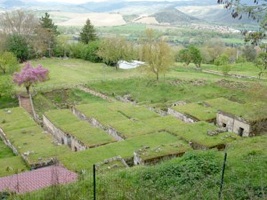
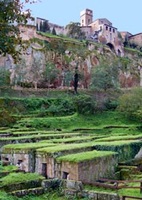
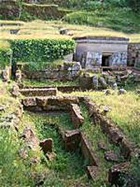
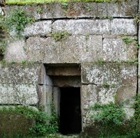
Finds in Museo Claudio Faina
Eugenio Faina bought a number of objects that were excavated in the 1870s in the necropolis in order to ensure that they remained in Orvieto. This is almost certainly the provenance of a number of finds from the necropolis that are exhibited in are exhibited in the Museo Claudio Faina. These include a collection of ceramic vases decorated in both the black figure (6th century BC) and red figure (5th century BC) styles, which is exhibited in Rooms 6 and 7. Other notable exhibits include the following:
Greek Vases (ca. 550 BC)
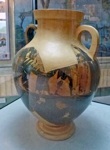
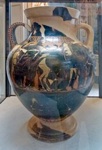

Three large, black figure vases in Room 8 are attributed to the important Greek artist Exekias. Objects like these were used to store the wine used in symposia, a practice that the Etruscans took from the Greeks. The presence of such high-quality possessions among the grave goods of the Crocifisso del Tufo Necropolis attests to the prosperity and sophistication of Orvieto at that time.
Bronze Objects (ca. 600 BC)
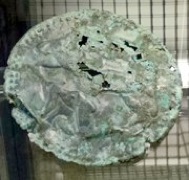

Room 15 contains a collection of eight bronze mirrors, together with a bronze disc (illustrated here). The museum provides a sketch of its damaged relief, which depicted a dancing satyr with leopards on its shoulders.
Finds in the the Museo Civico
The following finds from the necropolis of Crocifisso del Tufo are exhibited in the Museo Civico:
Warrior head (ca. 550 BC)
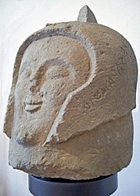
The cippus, which is in the form of the head of a warrior, was discovered above the tomb. According to the inscription on the right of the helmet, it marked the grave of Larth Cuperes, son of Aranth. This name is unlike others found in Orvieto, and it is thought that Larth might have been a foreign mercenary who settled in the city.
The inscription is discussed in context in the page Early Etruscan Inscriptions.
Funerary Cippus (6th century BC)
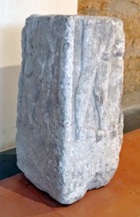
Finds in the Museo Archeologico Nazionale
Many of the finds in the museum came from the most recent excavation (1982-3) of the necropolis of Crocifisso del Tufo are exhibited in the Museo Archeologico Nazionale.
Drinking horn (6th century BC)
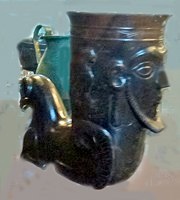
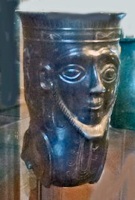
This striking bucchero drinking horn has a human head at one end and a crouching ram at the other. There is a similar object, apparently from Chiusi, in the Museum of Fine Arts, Boston.
Read more:
P. Bruschetti, “Le Necropoli di Orvieto”, in:
G. della Fina and E. Pellegrini (Eds), “Da Orvieto a Bolsena: un Percorso tra Etruschi e Romani”, (2013) Pisa, pp. 60-75
P. Bruschetti, “La Necropoli di Crocifisso del Tufo a Orvieto”, (2012) Pisa
Reviewed by W. V. Harris in Bryn Mawr Classical Review 2012
A. Feruglio, “Le Necropoli Etrusche”, in
G. della Fina and E. Pellegrini (ed), “Storia di Orvieto: Antichità”, (20o3) Perugia, pp 275-328
S. Stopponi, “Itinerari Etruschi: Orvieto” (1985) Milan
Return to Museums and Excavation Sites in Orvieto.

